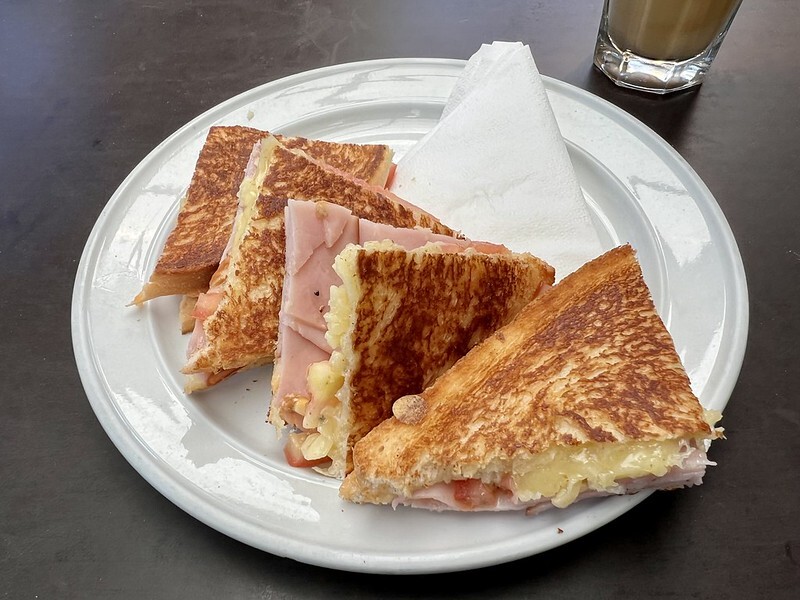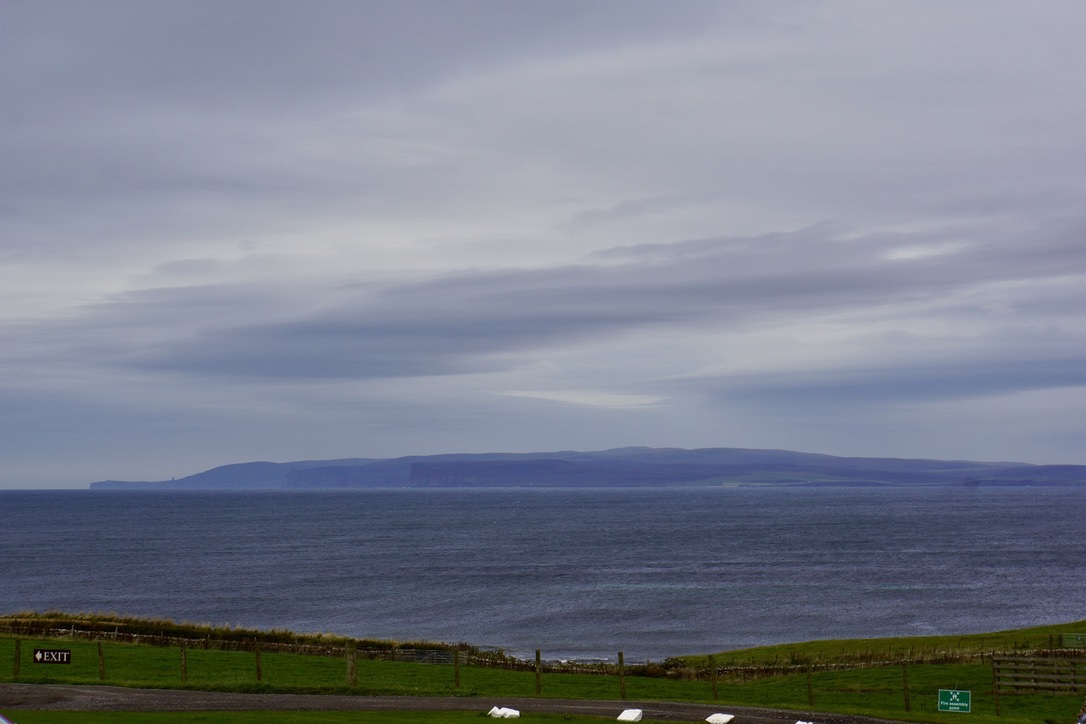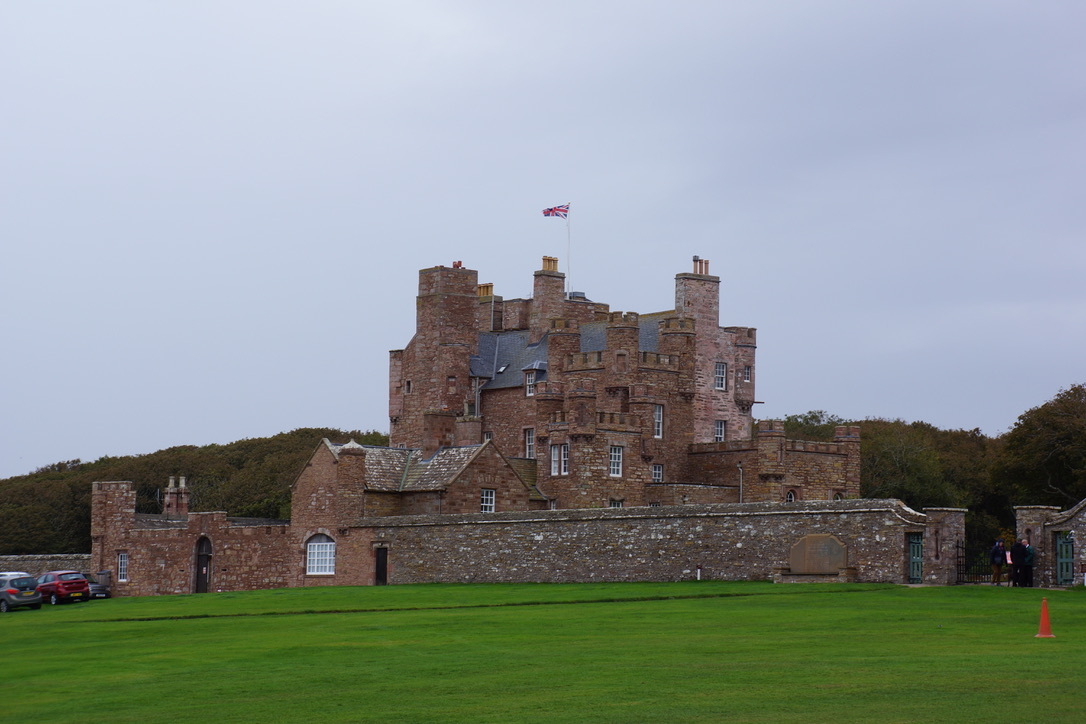Sunday Post: Ham and Cheese Toasties at the Edge of Britain
Member Update
This is just a quick update to let monthly members know they were charged today for September. If your payment failed, you should be notified so that your payment information can be updated. Please do that soon so you don't miss anything! Thank you for your continued support!
The chat forum was down for a day this past week. I'm sorry for the downtime. It broke, and I had to learn how to fix it, which took a bit of time. We're fine now!
Here are some highlights from the private chat community this week:
- Two decades of Top Gear and The Grand Tour — by Clarkson, Hammond and May
- James Herriot Interview from BBC Archive
- Favorite British Band?
- Oasis Buries the hatchet
- First Look at the New Wallace and Gromit Film
- Ted Lasso could return for a fourth series!
- 51 British cultural events to catch this autumn — from film and music to TV
Ham and Cheese Toasties at the Edge of Britain
It’s astounding that even after 25 years of travel around Britain, you can still discover something you have never noticed before, especially when it comes to food. On the final day of our journey from Land’s End to John O’Groats in 2018, we made a discovery that upended our conception of cheese. And toast. Together. And it happened in the most bizarre place you can imagine. The Queen Mum’s house.
Located at the very top of Scotland, the Castle of Mey was The Queen Mother’s private bolthole, which she purchased after the death of her husband, King George VI. The Queen Mother's relationship with the Castle of Mey began in 1952, shortly after the death of her husband. While touring Caithness, the northernmost county of mainland Scotland, she came across the then-named Barrogill Castle (it was originally named Castle of Mey). The castle, dating back to the 16th century, was in a state of near ruin, having been uninhabited for years.
Despite its dilapidated condition, the Queen Mother fell in love with the castle and its dramatic setting on the north coast of Scotland, overlooking the Pentland Firth. She decided to purchase it, saving it from abandonment and possible demolition. Reports differ, but the aging owner was looking to get rid of it, and when the Queen Mother expressed interest, that was the ideal way to dispose of it. Records are not clear, but the rumor is that she paid £1 or £100 for the castle. No one has admitted the actual cost. This decision to purchase the castle marked the beginning of a long and affectionate relationship between the Queen Mother and the Castle of Mey.
After acquiring the property, the Queen Mother set about restoring it. She renamed it the Castle of Mey, reverting to its original name. The restoration was a significant undertaking involving both structural repairs and aesthetic improvements. The Queen Mother took a personal interest in the renovation, selecting furnishings, and overseeing the redesign of the gardens. It was the perfect project for a widow after the death of her husband. It gave her something to work on and to look forward to her visits. The locals were pleased with the restoration, as it meant that local services such as plumbing and electricity in this very remote area were installed and became a lot more reliable.
When the restoration was complete, the castle became a private retreat for the Queen Mother, a place where she could escape the pressures of public life and enjoy the rugged beauty of the Scottish coastline. She typically spent three weeks at the castle in August and ten days in October each year, maintaining this tradition until shortly before she died in 2002 at the age of 101. These visits would usually coincide when the rest of the Royal Family would be in Scotland so that they could also visit, though Princess Margaret famously preferred to be elsewhere (like the Caribbean) rather than at what she called “mummy’s draughty castle.” HMY Britannia, the Royal Family’s yacht (now permanently moored in Edinburgh), would visit as well, parking offshore.
While planning our big drive, we were looking for something lovely to do after our long journey, and the Castle of Mey seemed like the perfect place to spend an afternoon before we had to drive back to Inverness, return our rental car, and take the Caledonian Sleeper back to London. So, after taking the necessary pictures at John O’Groats, we headed onward to the Castle of Mey, which was only about fifteen minutes down the road.
During her stays at the Castle of Mey, the Queen Mother immersed herself in local life. She became a well-known and much-loved figure in the area, often seen driving herself around the local roads and participating in community events. Her presence brought attention and visitors to this remote part of Scotland, boosting the local economy.
The castle itself is a fine example of medieval Scottish castle architecture. It features a Z-plan layout, typical of 16th-century Scottish castles, with a central rectangular block and projecting towers at opposite corners. The Queen Mother's renovations maintained the castle's historical integrity while making it a comfortable residence. It is not a large building by any means, so it was a lovely, intimate home for her. You can tour the place on special guided tours (we recommend booking ahead when the castle is open). Tours take about an hour (and you’re not allowed to take pictures).
The gardens at the Castle of Mey were a particular passion of the Queen Mother. Despite the challenging growing conditions due to the exposed coastal location, she created beautiful walled gardens that continue to thrive today. The Shell Garden, named for its decorative shell motifs, is a unique feature that showcases her personal touch.
After the Queen Mother's death, the Castle of Mey was entrusted to the Queen Elizabeth Castle of Mey Trust. In line with her wishes, the castle was opened to the public, allowing visitors to experience the place she held so dear. Prince Charles, now King Charles III, who was close to his grandmother, became president of the trust and continues to visit the castle annually, maintaining the family's connection to this special place.
In the gardens is the visitor’s center and cafe (exit through the gift shop, right?). By the time our tour was finished, we were quite ready for lunch and a cup of tea. So, we went into the cafe, sat down, and looked at the menu. It was not surprising that the menu at this remote place was rather limited. The main option on the menu was something called Toasties. Now, I’d seen these on menus elsewhere but never ordered one before. The most popular one on the menu was a ham & cheese toastie. Being quite hungry and not able to be particularly picky, we decided to try them together.
The "toastie," also known as the toasted sandwich or simply the British "toastie," is a beloved staple in British cuisine, with a history rooted in the evolution of convenience food and domestic appliances. The concept of placing ingredients between slices of bread and grilling them can be traced back to the early 20th century, but it was in the post-war years that the toastie really began to gain popularity in Britain. As rationing eased and kitchen appliances became more widespread, households across Britain embraced the ease and comfort of this simple yet satisfying dish.
The introduction of the electric sandwich toaster in the 1970s by Breville revolutionized the way toasties were made, bringing the dish into the mainstream. The Breville sandwich toaster allowed people to create perfectly sealed, hot, and crispy sandwiches with their choice of fillings, making it a favorite for quick and easy meals. The classic ham and cheese toastie became an iconic combination, but the versatility of the toastie meant that a wide range of fillings—from baked beans to tuna mayo (ewww)—could be enjoyed.

Toasties have maintained their popularity over the decades, becoming a nostalgic comfort food for many Brits, and quick convenience food found at many tourist attraction cafes, like the one at the Castle of Mey. It’s also a staple of children’s menus in these places (along with chicken goujons and noodles). They are often associated with childhood memories of after-school snacks or simple lunches. The British toastie continues to be a versatile dish, served in homes, cafes, and pubs across the UK, and it has even seen a resurgence in popularity with the rise of gourmet toasties featuring artisanal breads and creative fillings. Despite the changes in food trends, the toastie remains a beloved symbol of British culinary ingenuity.
The British invented their own version of the Panini and basically claimed the idea for themselves. My fellow Americans would call it a fancy grilled cheese. I’m generally averse to trying new foods, so it was with trepidation that I tried my first ham & cheese toastie. When I took my bite into the combination of rich British bread, melted British cheddar cheese, and delicious British ham, my mouth almost did a dance of happiness. We looked at each other like we had just discovered a secret that had been withheld from us.
Ham and Cheese toasties were delicious!

So, we sat there in that cafe next to the castle, on the edge of the island of Great Britain, eating our hot melted cheese sandwiches. It was quite something; it felt like we were dining on the edge of the world. Beyond the shore were the Orkney islands, covered in mist, with calm, grey seas leading the way. One wonders if the Queen Mother would sneak down to her own kitchen in the castle and make ham and cheese toasties herself. It seems like it would be something she would like secretly.
Ever since we’ve tried to make our own ham and cheese toasties back here in Indiana with moderate success, you have to have British bread (which you can import, but it’s expensive). British cheddar cheese is easy enough to find in most grocery stores, but British ham is almost impossible to find because it’s not really something that’s imported to the USA from Britain. So, I’m very much looking forward to my next return to Britain so that I can have a proper ham and cheese toastie in a romantic background like a castle, stately home, ruin, or other tourist attraction.

2 likes
Post a reply